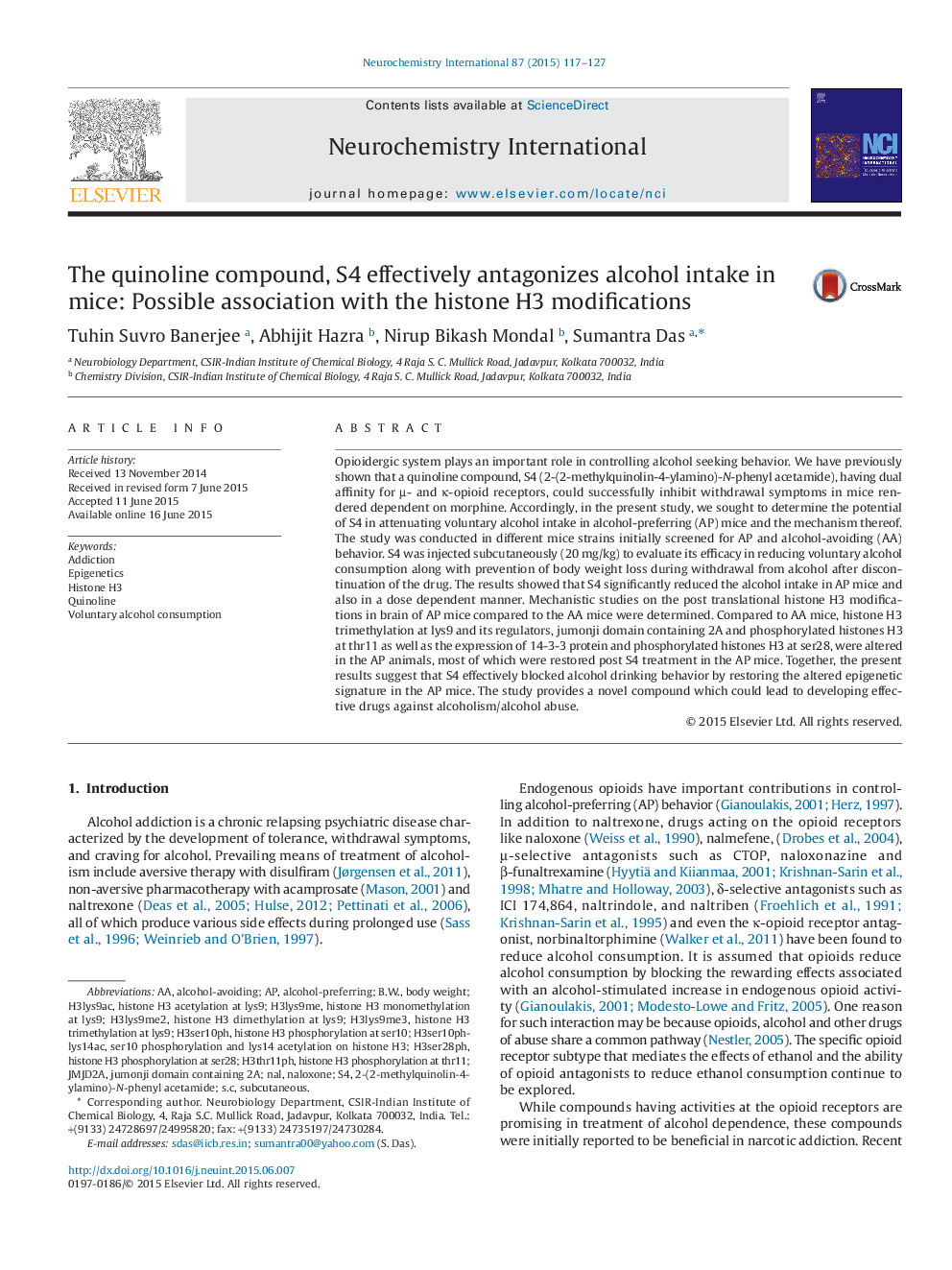| کد مقاله | کد نشریه | سال انتشار | مقاله انگلیسی | نسخه تمام متن |
|---|---|---|---|---|
| 2200429 | 1551288 | 2015 | 11 صفحه PDF | دانلود رایگان |

• The mixed opioid agonist, S4, effectively reduces voluntary alcohol uptake in mice.
• Alcohol preference is associated with marked changes in histone H3 modifications.
• S4 reversed such changes in histone H3 modifications to inhibit alcohol preference.
• Intervention strategies in epigenetic machinery may effectively treat addiction.
Opioidergic system plays an important role in controlling alcohol seeking behavior. We have previously shown that a quinoline compound, S4 (2-(2-methylquinolin-4-ylamino)-N-phenyl acetamide), having dual affinity for µ- and κ-opioid receptors, could successfully inhibit withdrawal symptoms in mice rendered dependent on morphine. Accordingly, in the present study, we sought to determine the potential of S4 in attenuating voluntary alcohol intake in alcohol-preferring (AP) mice and the mechanism thereof. The study was conducted in different mice strains initially screened for AP and alcohol-avoiding (AA) behavior. S4 was injected subcutaneously (20 mg/kg) to evaluate its efficacy in reducing voluntary alcohol consumption along with prevention of body weight loss during withdrawal from alcohol after discontinuation of the drug. The results showed that S4 significantly reduced the alcohol intake in AP mice and also in a dose dependent manner. Mechanistic studies on the post translational histone H3 modifications in brain of AP mice compared to the AA mice were determined. Compared to AA mice, histone H3 trimethylation at lys9 and its regulators, jumonji domain containing 2A and phosphorylated histones H3 at thr11 as well as the expression of 14-3-3 protein and phosphorylated histones H3 at ser28, were altered in the AP animals, most of which were restored post S4 treatment in the AP mice. Together, the present results suggest that S4 effectively blocked alcohol drinking behavior by restoring the altered epigenetic signature in the AP mice. The study provides a novel compound which could lead to developing effective drugs against alcoholism/alcohol abuse.
Journal: Neurochemistry International - Volume 87, August 2015, Pages 117–127